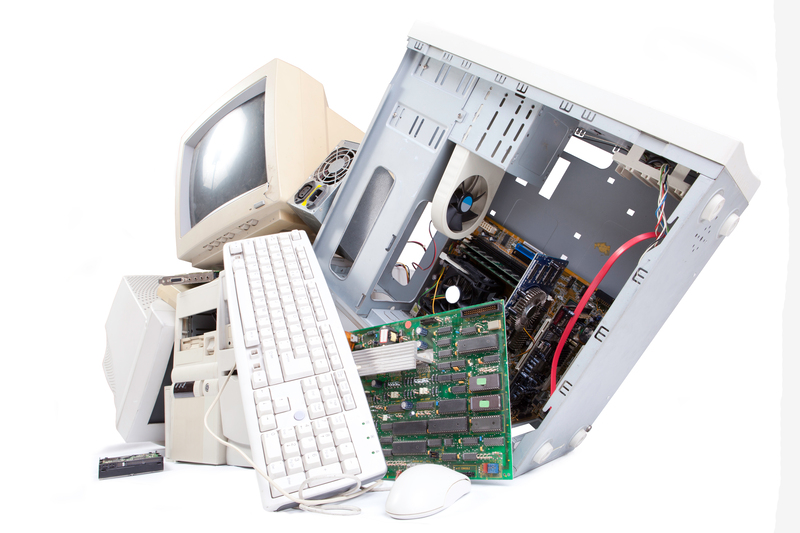The Dos and Don'ts of Disposing PPE Waste Properly
Personal Protective Equipment (PPE) plays a critical role in safeguarding lives, especially during health crises like the COVID-19 pandemic. Masks, gloves, face shields, gowns, and other items have become an everyday necessity for both healthcare workers and the general public. However, proper disposal of PPE waste is just as important as its correct usage. Mishandling used PPE can pose significant environmental, health, and safety risks. Understanding the dos and don'ts of safely disposing PPE waste helps protect individuals, communities, and the planet.
Why Proper PPE Waste Disposal Matters
With billions of PPE items used globally each year, their improper disposal has led to environmental contamination, health hazards, littering, and even the spread of infectious diseases. Used PPE is often contaminated with bodily fluids, pathogens, or chemicals, turning it into a hazardous material if not handled correctly. Environmental agencies and health departments stress the importance of safe PPE waste management to minimize direct and indirect harm.
Main Reasons for Proper PPE Disposal
- Reduces spread of infectious diseases including viruses and bacteria.
- Protects waste management workers from accidental exposure.
- Prevents environmental pollution in landfills, oceans, and urban areas.
- Complies with public health regulations and government mandates.
- Avoids clogging sewer systems and harming wildlife.

The Dos of PPE Waste Disposal
To protect yourself and others, always follow best practices for PPE disposal at home, at work, or in public settings. Here is a comprehensive list of PPE waste disposal dos:
1. Always Treat Used PPE as Potentially Infectious
- Handle used PPE with clean gloves if possible.
- Avoid touching your face, mouth, or eyes during disposal.
- If PPE is soaked in bodily fluids or blood, dispose in a sealed bag immediately.
2. Dispose of PPE in a Designated Waste Bin
- Use lined bins with lids to minimize contact and contamination.
- Mark bins as 'PPE Waste Only' for easy identification.
- Place bins in accessible but secure locations in workplaces and public areas.
3. Bag the PPE Waste Securely
- Place used masks, gloves, and gowns in a sturdy, leak-proof plastic bag.
- Tie the bag securely before placing it in the final disposal bin.
- For high-risk areas (e.g. hospitals), use double-bagging to further reduce risk.
Pro tip: If you're disposing of PPE at home, use a separate bag and label it as 'Infectious Waste' or 'Personal Protective Equipment' to inform waste handlers.
4. Wash Your Hands Thoroughly After Handling PPE Waste
- Use soap and water for at least 20 seconds after disposing of any PPE.
- Hand sanitizer with at least 60% alcohol can be used if soap is unavailable.
5. Follow Local Guidelines for Medical Waste Disposal
- Familiarize yourself with municipal regulations regarding PPE waste management in your area.
- In healthcare or laboratory settings, discard PPE in biohazard waste containers as per facility protocols.
- If your locality has a special collection or drop-off for PPE, always use those services.
6. Educate Others on Proper PPE Waste Disposal
- Raise awareness among coworkers, family, and friends about safe PPE disposal.
- Share posters or infographics on dos and don'ts for PPE waste management in public settings.
7. Opt for Reusable PPE Where Appropriate
- Consider using washable masks or face shields that can be cleaned and reused.
- When using reusable PPE, sanitize them thoroughly before the next use.
Remember, implementing these best practices for PPE waste disposal can go a long way in protecting both public health and the environment.
The Don'ts of Disposing PPE Waste
Despite the clear guidelines, common mistakes still occur when disposing of PPE. To avoid putting yourself or others at risk, here's what NOT to do:
1. Don't Recycle Contaminated PPE
- Disposable face masks, gloves, and gowns should not be placed in recycling bins.
- PPE is not recyclable through standard curbside programs and can compromise the recyclability of other materials.
PPE waste belongs in specially marked or general waste bins, not recycling bins.
2. Don't Flush PPE Items Down the Toilet
- Never dispose of masks, gloves, or wipes in sinks or toilets.
- This can clog pipes, damage water systems, and pollute waterways.
3. Don't Litter Used PPE in Public Spaces
- Littered PPE is hazardous to humans, animals, and the environment.
- Improperly discarded PPE can spread disease if picked up by others or blown by the wind.
4. Don't Mix PPE Waste with Household Recycling
- Even if the PPE looks 'clean,' don't place it with plastic bottles or paper recycling.
- Separate PPE waste from all recyclable materials to avoid cross-contamination.
5. Don't Remove PPE Carelessly
- Take off gloves, masks, and gowns without touching the exterior surfaces.
- Improper removal can lead to direct exposure to contaminants.
6. Don't Leave Full PPE Waste Bags Untied
- Always seal waste bags tightly before moving or storing them.
- An unsealed bag increases the risk of leaks or accidental contact.
7. Don't Ignore Signs or Instructions at Disposal Points
- Many public places have designated PPE disposal containers with clear instructions.
- Ignoring signage can put yourself and others in danger.
8. Don't Burn PPE Waste at Home
- Burning plastics and synthetics found in masks or gloves releases toxic fumes.
- Burning PPE is typically illegal and hazardous to air quality.
Special Considerations for Different Types of PPE
The method of disposing different PPE items may vary. Here's how to handle the most common types:
Masks (Surgical, Cloth, N95, Respirators)
- Surgical and N95 masks: After use, place in a plastic bag and discard with general waste or in a designated PPE bin.
- Cloth masks: Wash regularly in hot water. Only dispose of them if damaged and follow general waste procedures.
- Avoid touching the front of the mask when removing.
Gloves
- Remove gloves by peeling from the wrist and turning inside out.
- Dispose immediately in sealed bags or designated bins.
Gowns and Coveralls
- If disposable, treat as contaminated and discard in infectious waste.
- For reusable items, follow laundering instructions and sanitize thoroughly.
Face Shields and Goggles
- These are often reusable. Disinfect with appropriate cleaning solutions between uses.
- If broken or no longer usable, discard safely as general waste but avoid recycling.
Environmental Impact of Improper PPE Waste Management
Recent studies show massive increases in plastic pollution due to abandoned PPE. Masks, gloves, and wipes are being found on beaches, parks, and sidewalks worldwide. Such waste:
- Breaks down into microplastics, threatening marine and terrestrial life.
- Can entangle or be ingested by wildlife.
- Overwhelms waste management and landfill systems.
- Complicates the work of waste management professionals due to contamination risks.
By following PPE waste disposal guidelines, each individual can play a role in minimizing this impact and preserving environmental health.
Guidelines for PPE Disposal at Home
What should you do at home if you or a family member has used PPE?
- Place all used PPE in a plastic bag. Avoid compressing the bag with your hands.
- Seal the bag and store it away from children and pets until you can safely dispose of it.
- If someone at home is ill, dispose of their PPE separately and clean your hands after every handling.
- Double bag if the PPE is heavily soiled or used for an individual under quarantine.
- Do NOT attempt to recycle disposable PPE items through household recycling programs.
Disposing PPE Waste During Cleaning or Caring for Loved Ones
- Wear new gloves while gathering used PPE.
- Dispose of gloves and mask after cleaning, then wash your hands thoroughly with soap and water.
PPE Waste Disposal Guidelines for Workplaces and Healthcare Facilities
Workplaces and healthcare settings often produce large volumes of PPE waste. Following industry-standard procedures is crucial for minimizing occupational hazards:
- Ensure that waste bins are available at all PPE removal points.
- Use color-coded bins (often yellow or red) for infectious PPE waste.
- Train employees regularly on proper PPE removal and disposal methods.
- Arrange frequent waste collection to avoid overflow.
- Partner with certified biohazard waste management companies for disposal.
Healthcare facilities must comply with OSHA, CDC, and local regulations surrounding medical PPE waste. Failing to do so can result in legal penalties and increased risks of infection spread.

Innovations and Future of PPE Waste Management
As the use of PPE becomes more prevalent, innovative solutions are being developed to address the mounting waste. Here are some emerging trends:
- Biodegradable PPE: Research is ongoing into biodegradable masks and gloves made from plant-based polymers.
- PPE Recycling Programs: Some companies are piloting take-back and recycling schemes specifically for used PPE via sterilization and reprocessing.
- Smart Bins: Automated disposal bins equipped with disinfection technologies and contactless operation are being introduced in crowded spaces.
While traditional PPE should not be recycled at home, these new systems may offer safer and more sustainable alternatives in the future.
Summary: Protecting Health and the Environment with Responsible PPE Waste Disposal
The surge in PPE use around the world highlights the urgent need for safe and responsible PPE waste disposal. By practicing the dos and avoiding the don'ts, individuals and organizations can:
- Prevent the spread of infectious diseases.
- Minimize environmental contamination and wildlife hazards.
- Comply with regulations and protect waste handling staff.
- Foster a culture of responsibility and cleanliness.
When in doubt, remember to handle all used PPE as if it were hazardous. Dispose in lined, clearly marked containers, never recycle or flush PPE, and always wash your hands after handling. By spreading awareness and adopting best practices, we all contribute to a safer, cleaner, and more sustainable world.
Key Takeaways
- Do: Use designated bins, seal waste bags, wash hands, and follow local guidance.
- Don't: Litter, recycle, flush, or burn used PPE. Avoid mishandling contaminated items.
Further Reading
- EPA: Guidance for Disinfecting and Disposing PPE
- CDC: Infection Control and PPE Use
- WHO: Safe Management of PPE Waste
Together, let's prioritize proper PPE waste disposal--for our health, our communities, and our planet.